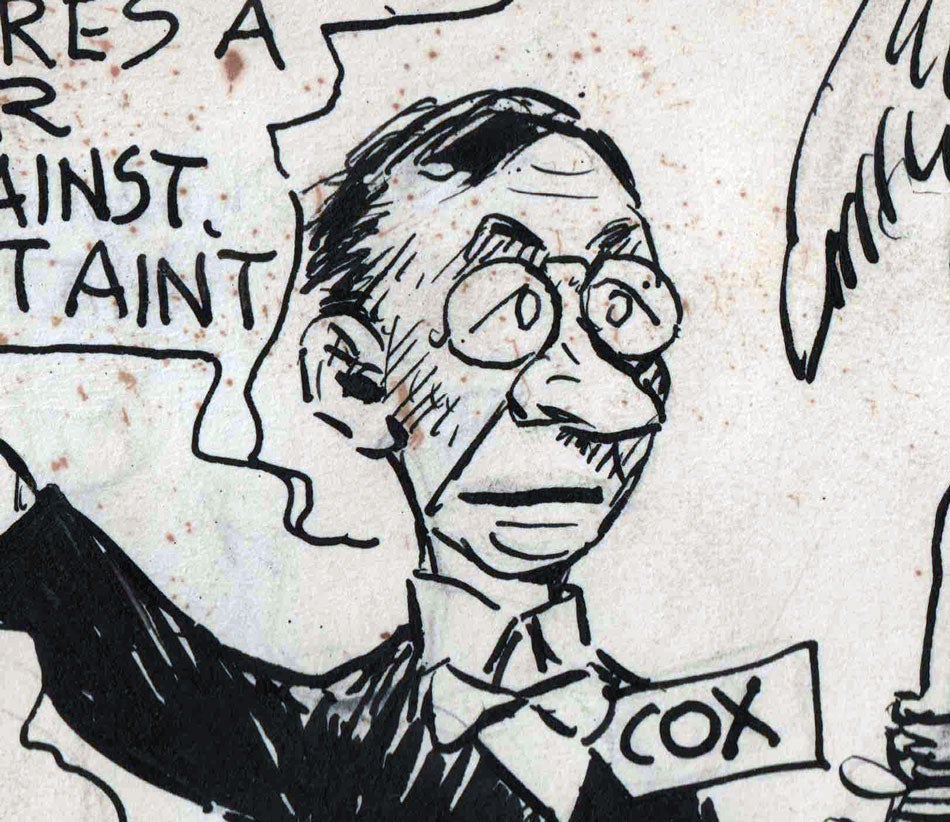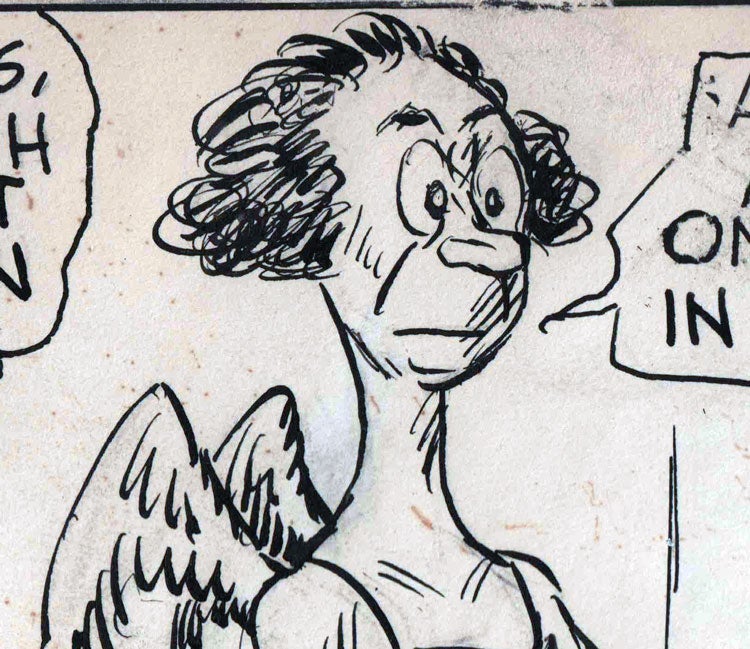
“Jimmy and His War Bride” (August 8, 1920)
by Frederick Burr Opper (1857-1937)
12 x 14 in., ink on paper
Coppola Collection
https://en.wikipedia.org/wiki/Frederick_Burr_Opper
Frederick Burr Opper is perhaps my favorite of the first generation of cartoonists. I like his loose style, and the obviousness of his ink strokes, and the way he depicts the common people of the day.
Forming the League of Nations after WW1 was not embraced by the growing isolationist movement in the US. The Senate turned down the Treaty of Versailles on November 19, 1919 (55-39), spurning the formation of the League. The Senate reconsidered the treaty once more, with reservations, on March 19, 1920. That vote, 49-35, fell seven votes short of the required two-thirds majority. In 1921, Congress passed the Knox-Porter Resolution, formally ending the war with Germany. By then, the treaty was widely seen as lifeless.
Article X of the Covenant of the League of Nations was the section calling for assistance to be given to a member that experiences external aggression. It was signed by the major Peacemakers (Allied Forces) following the First World War, most notably Britain and France. But due to the nature of that Article, Wilson was unable to meet his obligation to join the League of Nations, as a result of strong objection from U.S. politicians.
James M. Cox, Governor of Ohio, was an outspoken advocate for the League, and his support was used by his critics.
During the period for the selection of delegates to the Democratic Convention at San Francisco in 1920, Cox gave a signed interview to the New York Times, in which he reviewed the controversy concerning the League of Nations and outlined two reservations which he believed would satisfy every reasonable objection. In part, he said:
“If public opinion in the country is the same as it is in Ohio, then there can be no doubt but that the people want a League of Nations because it seems to offer the surest guarantee against war. I am convinced that the San Francisco Convention will endorse in its vital principles the League adopted at Versailles. “There can be no doubt but that some senators have been conscientious in their desire to clarify the provisions of the treaty. Two things apparently have disturbed them. First, they wanted to make sure that the League was not to be an alliance, and that its basic purpose was peace and not controversy. Second, they wanted the other powers signing the instrument to understand our constitutional limitations beyond which the treaty-making power cannot go.”
He was chosen as the Democratic nominee for president on the forty-fourth ballot of the 1920 Democratic National Convention.
The Governor’s position on the League was amplified in his Address of Acceptance at Dayton on August 7th, 1920, in which he said: “We are in a time which calls for straight thinking, straight talking and straight acting. This is no time for wobbling. Never in all our history has more been done for government. Never was sacrifice more sublime.”
Running on a ticket with future President Franklin D. Roosevelt as his running mate, Cox suffered the worst popular vote defeat (a 26.17% margin) in presidential election history.
Bernard Baruch was a long-time financial powerhouse and advisor, and would predict the market crash of 1929, advising Will Rogers, among others, to pull their money (which Baruch had started to do in 1927).
Opper’s text gives great contextual insight:
Our hero, realizing that he can’t shake his bride, tries to make the best of a bad job. He stages a thrilling tableau entitled “Don’t Best the Heart of the World,” with his bride as the Angel of Peace. But – she crabs the scene by appearing with a pair of boxing gloves and big club. Article ten also gets it all wrong. It was tough! How can you give a serious show when the whole audience is laughing? Look for the next installment. We hate to brag, but it’s simply – to be continued.



